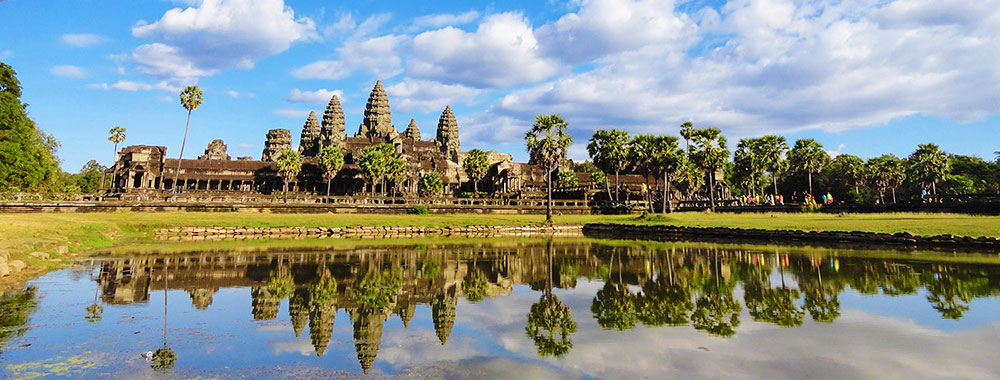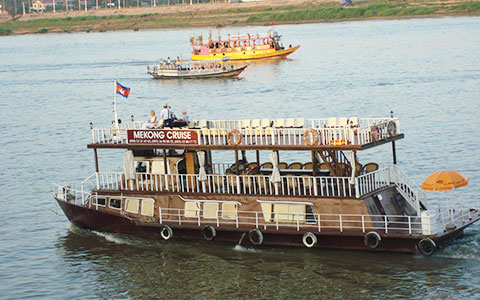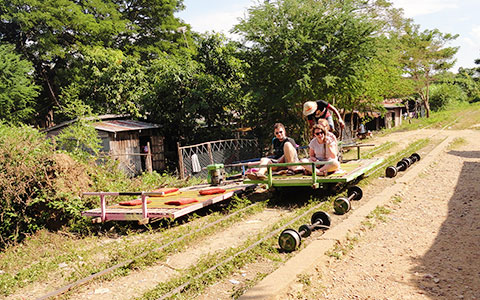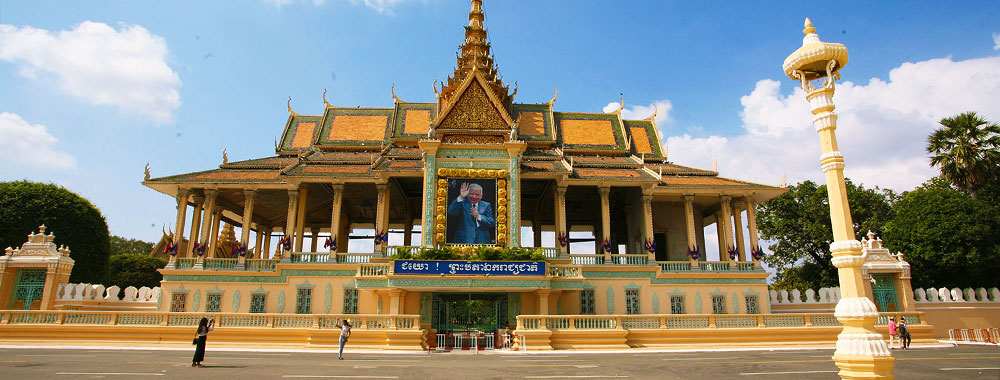Traveling in Cambodia, except for visiting the famous Angkor Wat, there are a lot of other places worth making a step to. Also, there are some meaningful activities you shall not miss.
Top Destinations and Activities
1. Siem Reap: Angkor Wat, Tonle Sap Lake, Beng Mealea, watching an Apsaras Dance Performance...
2. Phnom Penh: Royal Palace, National Museum of Cambodia, Killing Field, Central Market, Russian Market...
3. Battambang: Battambang Museum, Wat Phnom Sampeau, taking a "bamboo train"...
 |
| Angkor Wat, Siem Reap |
Best Time to Go
From December to next January is the best time for Cambodia travel. It is the coolest time among all and does not rain too much. It is generally hot in the country with the annual average temperature at about 80℉-82℉ (27℃-28℃). April is the hottest month in a year with the temperature even reaching 105℉ (40℃). Affected by the tropical monsoon climate, it has a clear distinction of rainy season and dry season. From May to October is the rainy season, also the slack travel season, and from November to next April is the dry season, also the peak travel season. For what to wear, T-shirts easy to dry, shorts, dresses and slippers are recommended. In addition, remember to take rain gears, sun-blocking protections like sunglasses, and some common medicines.

See also:
Cambodia Weather To get in the country, you can take a plane or an international bus. The international air service to the country is not so convenient for travelers worldwide. Currently it only covers around 10 countries including China, Japan, South Korea, Thailand, Malaysia, Philippine, Laos, Singapore, Dubai and Qatar. If there is no direct flight connecting your country and Cambodia, you can transfer in China, Thailand, Malaysia, etc. For travelers from neighboring countries like Vietnam and Thailand, international buses are available to cross the border.
To get around inside the country, there are domestic flights between three major cities: Phnom Penh, Siem Reap and Sihanoukville. Trains are only available between Phnom Penh and Sihanoukville. Taking a long-distance bus is also a good choice. Besides, you can take a ferry along Mekong River and Tonle Sap Lake to travel between Phnom Penh, Siem Reap, Battambang and Sihanoukville. Traveling inside the cities, you can take a Tuk-tuk, a bamboo train in some cities like Battambang, rent a motorbike or bike to visit tourist attractions.
In Cambodian culture, left hand is regarded as dirty, so do not use your left hand to touch Cambodians or hand things to them. Also, their head is regarded as the most holy part of their body, so avoid touching their heads, even children's. As Theravada Buddhism is the major belief in the country, remember to follow the manners required by the religion during your trip. For instance, wear clothes that can cover your arms and knees when visiting temples and pagodas. Remove your shoes when entering holy places, official places and local people's home to show respect.
 | | Mekong River Ferry | |  | | Bamboo Train in Battambang | |
History
Cambodia is a civilized ancient country established in the late first century. It went through several periods including Funan Kingdom (1st century - 550), Chenla Kingdom (6th century - 802) and Khmer Empire (802 - 1431). Khmer Empire, more widely known as Angkor Period, is the most prosperous era in Cambodian history. Paying a visit to Angkor Wat, you can have a glimpse on the prosperity of the ancient Angkor Period.
 |
| Royal Palace in Phnom Penh |
Geographical Features
The country is a basin facing Gulf of Thailand on the south and other sides are surrounded by hills and mountains. In the east, north and west are mainly forests rich in tropical wood resources like teakwood, ironwood and sandalwood. The central part is broad plains fed by Mekong River and Tonle Sap Lake, providing excellent conditions for rice production. That is why in Cambodians' daily diet, rice is the main staple food.
- Last updated on Sep. 13, 2024 by Jally Zhang -
 See also: Cambodia Weather
See also: Cambodia Weather


